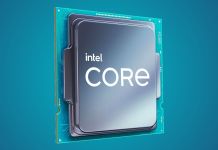Intel’s coming Nehalem architecture is expected to be something extraordinary when it comes to making use of the bandwidth that has been available since the introduction of the DDR3 memory standard. TGdaily writes that today’s Intel chipsets can only take advantage of 50-60% of the bandwidth DDR3 has to offer, while Nehalem is suppose to improve this figure substantially and move the bar up to 90%. And the explanation does make a bit of sense;
“The performance memory industry is alive and kicking these days, despite the fact that the advantages of higher clock speeds, which currently reach to 2000 MHz, are fading and are virtually non-existent, at least on Intel platforms. The simple reason is that the memory bandwidth is constrained by the FSB, which limits the bandwidth to 8.53 GB/s in a 1066 MHz FSB (266 MHz QDR), to 10.66 GB/s in a 1333 MHz (333 MHz QDR) version and 12.8 GB/s in those rare 1600 GHz (400 MHz QDR) models.
However, dual-channel memory can offer a bandwidth that exceeds what FSB can take: 12.8 GB/s (DDR2-800) to 32 GB/s (DDR3-2000). Even if you buy those ultra-expensive DDR3-2000 devices you won’t see a dramatic increase in performance, at least if you don’t overclock the FSB at the same time. To support that 32 GB/s bandwidth, you would need a CPU capable of running a 4 GHz FSB (1000 QDR).”
More HERE.


















